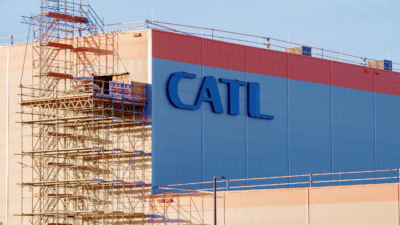Rivian Finally Sees Sales Increase, But Not Nearly Fast Enough
On Monday, Rivian announced an expectations-beating jump in deliveries for its third quarter. But a new report says it’s still losing money.

Sign up for smart news, insights, and analysis on the biggest financial stories of the day.
Want to buy a brand new Rivian EV for way under cost?
On Monday, the company announced an expectations-beating jump in deliveries for its third quarter. But for each sale of its $80,000 truck, Rivian is still losing $33,000, according to a Wall Street Journal report also published Monday. Something tells us that can’t last.
The New Normal
When Rivian first revved up, some investors billed it as “the Tesla for Trucks.” The hype lasted at least through its 2021 public market debut, when it raised $12 billion to become the largest IPO since a twenty-something Mark Zuckerberg introduced Facebook to Nasdaq. For a brief moment, Rivian was even valued higher than both Ford and GM. But the rubber didn’t exactly ever meet the road.
The EV player still operates out of a single factory in Normal, Illinois, with aims to produce 52,000 vehicles this year. But that’s less than roughly one-third of the facility’s capacity — highly unusual for a car company, and quite costly, too. The company posted a loss of $1.2 billion for its recent second quarter. Plus, it’s likely paying up to $25,000 more than the market rate for car parts, Wells Fargo analyst Colin Langan told the WSJ, and it’s now burned through over half its $18 billion war chest — with executives not expecting to hit profitability until the end of next year.
Worse, Tesla is now leading the entire EV industry into a price-slashing race to the bottom:
- The average EV sales price fell nearly 19% year-over-year to $53,376 in August, according to Cox Automotive. That’s largely been led by Tesla, which has aggressively slashed the price of its Model 3 and Model Y cars.
- According to former employees who spoke with the WSJ, Rivian engineers have been ordered to slash as much as $40,000 in parts and production expenses per vehicle.
Still, the company did deliver 15,564 vehicles in its most recent quarter, up 23% from a year ago, and handily beating the roughly 14,000 deliveries that most analysts expected.
The Truck Stops Here: Rivian, nevertheless, remains the “Tesla for Trucks” by a very literal definition. That’s because Tesla’s own production woes continue to keep its long-awaited Cybertruck away from consumers. Elon Musk said in April he anticipated hosting a delivery event for the Cybertruck in the third quarter. Evidently, that’s failed to happen. And Tesla needs a hot new product now more than ever. On Monday, the EV king announced 435,059 vehicles sold in the three month span, its first sequential decline in over a year. That still marked a 26% leap year-over-year, but analysts were expecting a 34% increase. In other words, there’s no easy place in the EV pecking order.











